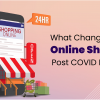Imagine crafting a magnificent sculpture – but without a rough sketch or clay Mold, how would you know if your vision matches the final product? In the world of product development, prototyping plays a similar role. It is the bridge between conception and creation, a tangible representation of your idea that allows you to test, refine, and ultimately build a product that resonates with your users.
Why Prototyping Matters
Think of prototypes as your guinea pigs. Prototyping in product development the brunt of potential problems, revealing design flaws, functionality issues, and even user experience hiccups before it’s too late. Through early feedback and testing, you can identify weak spots and pivot your design, saving time, resources, and potential embarrassment.
Prototyping is not just about fancy mock-ups or early-stage models. It is a crucial step in the development process that offers a multitude of benefits:
Visualization and Concept Validation:
Prototypes provide a tangible and visual representation of a product idea. This allows stakeholders to better understand the concept, providing a clearer picture than mere descriptions or drawings. It facilitates communication among team members and helps validate whether the envisioned product aligns with the initial concept.
User Feedback and Iterative Improvement:
By creating a prototype , developers can gather valuable feedback from potential users early in the development process. This iterative approach enables quick adjustments and refinements based on user input, ensuring that the final product meets user needs and expectations.
Risk Reduction:
Prototyping in product development helps identify potential design flaws, technical challenges, or user experience issues early in the development cycle. By addressing these issues at the prototype stage, the development team can mitigate risks and prevent costly corrections later in the process.
Cost Savings:
Tweaking a digital model is far cheaper than rejiggering a full-fledged product later. Prototyping allows you to experiment with different materials, features, and functionalities without breaking the bank. This iterative process refines your product while optimizing costs and minimizing risky bets.
Fixing problems in the early stages of product development is significantly more cost-effective than making changes after a product has been fully developed. Prototyping helps identify and address issues before extensive resources are committed to building the final product, leading to overall cost savings.
Faster Time-to-Market:
Prototyping allows for a faster development cycle. It helps streamline the decision-making process, reduces the time spent on rework, and accelerates the overall development timeline. This is especially important in industries where time-to-market is a critical factor.
Effective Communication with Stakeholders:
A prototype serves as a bridge between different teams – engineers, designers, marketers, and even investors. It provides a visual reference point, fostering clearer communication and alignment on the product vision. This cohesive understanding strengthens collaboration and fuels smoother development across departments.
They help bridge the gap between technical and non-technical team members, ensuring everyone is on the same page regarding the product’s features, functionality, and design.
Usability Testing:
Prototyping in product development allows for usability testing to evaluate the user experience and interface design. Observing how users interact with the prototype provides insights into usability issues, allowing for refinements to enhance the overall user experience.
Demonstration of Functionality:
Prototypes offer a hands-on demonstration of a product’s core functionalities. This demonstration helps stakeholders better grasp the capabilities of the product and how it addresses specific needs or challenges.
Building Confidence and Hype:
A tangible prototype sparks excitement and generates buzz. It allows stakeholders to visualize the product’s potential, boosting confidence and securing necessary buy-in. Showcasing a prototype to potential investors or even early adopters can attract valuable interest and resources.
Facilitates Decision-Making:
Prototypes serve as a basis for informed decision-making. They provide a tangible reference point for discussions and enable stakeholders to make critical decisions about the product’s features, design, and functionality.
Prototyping & product development –
The beauty of prototyping in product development lies in its versatility. From low-fidelity sketches to high-fidelity interactive models, the type of prototype depends on the stage of development and available resources. Here are some common prototyping styles and development.
- Paper Prototypes: Quick and inexpensive, paper prototypes allow you to rapidly iterate on ideas and test basic functionalities.
- Wireframes: These digital mock-ups outline the layout and flow of your product, helping visualize user interaction and information hierarchy.
- Low-fidelity Prototypes: Using basic materials like cardboard or foam, these prototypes focus on core functionalities and user experience without getting bogged down in aesthetics.
- High-fidelity Prototypes: These polished models closely resemble the final product, incorporating visual design elements and interactive features for realistic testing.
By understanding the relationship between prototyping styles and development, you can create a roadmap for success. Choose the right style, leverage its strengths, and watch your project evolve into a well-refined and successful final product.
Partnering with a Product Development Company
Navigating the complex world of product development can be challenging. Partnering with a reputable product development company can provide invaluable expertise and resources to elevate your prototyping process. But before associating with any product development company, make a list of Top 10 product development companies, understand how they function, look at their customer feedback and reviews online Just to ensure you are investing in right kind of company. Look for a company with:
- A strong prototyping culture: The company should prioritize prototyping throughout the development cycle, offering diverse prototyping capabilities and experienced teams to guide you.
- User-centric approach: The focus should be on involving users in the prototyping process, ensuring the final product addresses their needs and pain points.
- Agile methodology: A flexible and iterative approach to development allows for continuous refinement based on prototyping feedback, leading to a more successful product.
Remember:
- There’s no one-size-fits-all prototype. Choose the level of detail and fidelity that best suits your stage of development.
- Embrace iteration and fail fast. Prototyping is about learning and refining, so don’t be afraid to scrap and start over.
- Involve your users early and often. Their feedback is the gold that polishes your product.
Bringing Your Dream to Life
Prototyping is a powerful tool that empowers you to transform your vision into a reality. By embracing its potential, you can minimize risk, maximize innovation, and build products that truly resonate with your users. So, the next time you have a brilliant idea, remember – before diving headfirst into development, grab a pen, some paper, or even a cardboard box, and start prototyping your dream. You might be surprised at the journey it takes you on.
Ready to unlock the power of prototyping for your next product? Contact us today and let our experienced team of product design and development experts guide you through the process of bringing your vision to life.
I hope this blog provides a comprehensive and engaging overview of why prototyping is so important in product development. Remember, you can adapt and expand on the content to suit your specific audience and target their unique needs within the ever-evolving world of product development.










